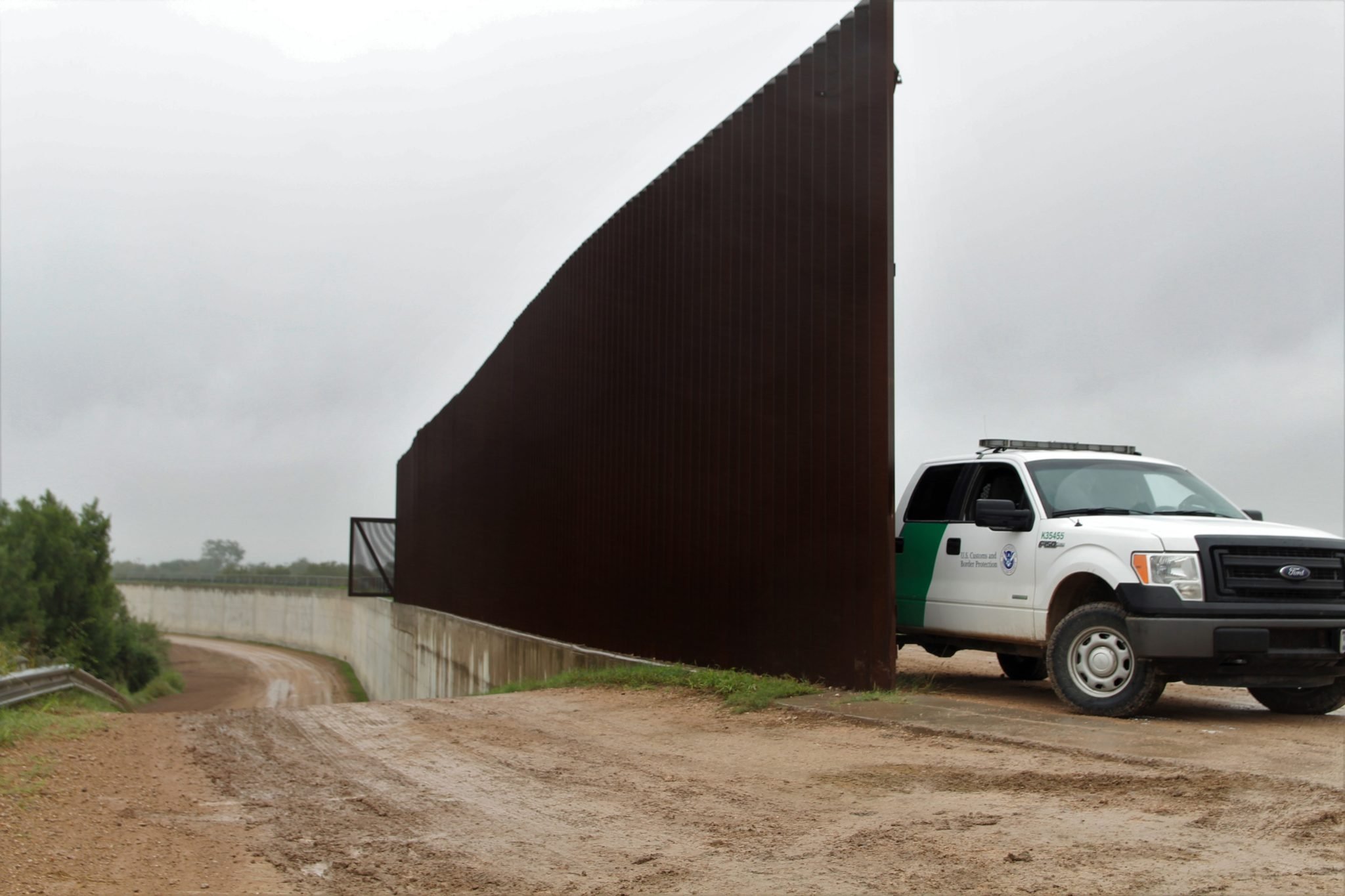Just across the Texas border, in cities like Reynosa and Nuevo Laredo, criminal networks are strengthening their hold on drug routes despite increased enforcement efforts by the United States and Mexico.
Rather than rely on individual smugglers crossing unmanned sections of the border, cartels specializing in fentanyl and other synthetic drugs use legal ports of entry, commercial vehicles, and digital payment systems to move drugs and launder profits with less risk, according to federal drug enforcement data and Texas Observer interviews with experts on cartel operations.
The tactics may be more modern, but the result is the same. Criminal networks are adapting faster than government policy. The drug war is less centered on tunnels or border fences and more on encrypted communication, synthetic chemicals, and financial systems that remain poorly regulated. Despite billions spent on enforcement, U.S. efforts often fail to match the pace of complexity of the trade, Guadalupe Correa-Cabrera, co-director of the Terrorism, Transnational Crime and Corruption Center (TraCCC) at George Mason University told the Observer.
“To sell more products, you have to go online,” Correa-Cabrera said. “And you keep anonymity by going online.”
She emphasized that many dealers are not Mexican cartel bosses, but United States-based players using American platforms. “They specialize. Some people produce. Some transport. Others connect dealers with larger distributors. That’s what’s missing from the public’s understanding.”
 Mexican President Claudia Sheinbaum speaking during a morning press briefing of La Mañanera on June 10th (Angeles Ponpa/Medill News Service)
Mexican President Claudia Sheinbaum speaking during a morning press briefing of La Mañanera on June 10th (Angeles Ponpa/Medill News Service)In February 2025, Mexican President Claudia Sheinbaum deployed more than 10,000 soldiers to her country’s northern border under Operación Frontera Norte in response to tariff threats by the Trump administration. Officials announced a sweeping crackdown to stem the flow of fentanyl into the United States. By June, Mexican authorities had reported seizing nearly 70,000 pounds of drugs, including 392 pounds of fentanyl.
Sheinbaum hailed the operation’s success in recent press conferences. “The reduction of fentanyl, or the passage of fentanyl from Mexico to the United States has fallen in a very dramatic way. Since Trump entered government to the present, the reduction is about 40 percent,” she said in June.
Administration officials at the Drug Enforcement Agency and U.S. Immigration and Customs Enforcement (ICE) failed to respond to requests for comment from the Medill News Service and the Texas Observer on those numbers.
But Correa-Cabrera questioned the effectiveness of such deployments. “We don’t really know if it’s really working,” she said. “When you use the military or police to enforce drug policy, they often become involved themselves.
In the past, large-scale narcotics enforcement focused on plant-based drugs like cocaine, heroin, and marijuana—substances that all require space, time, and risk to grow, dry, pack, and transport. Fentanyl changed that.
Just two milligrams of fentanyl can be fatal. One year’s supply of fentanyl for the entire U.S. market can fit in less than three pickup trucks. This makes fentanyl more difficult to track than other drugs.
Neither government is going after the roots of the synthetic drug problems, Correa-Cabrera said. “The U.S. and Mexican governments keep going after cartel members instead of dismantling the full networks—the financial flows, arms trafficking, addiction, corruption,” Correa-Cabrera added. “
In the Mexican state of Sinaloa, the historical epicenter of synthetic drug production, fragmentation of leadership within the Sinaloa Cartel has disrupted how the group functions. The sons of Joaquín “El Chapo” Guzmán, known as Los Chapitos, have come under pressure from rival factions and government raids. What was once a consolidated industrial drug empire is now fracturing into competing fiefdoms.
Border experts say this disruption has prompted a broader shift, as powerful groups take or retake control of key corridors and push out smaller traffickers through violence, extortion, or forced cooperation.
Cartel Jalisco Nueva Generación (CJNG)—Sinaloa’s top rival—has capitalized on the chaos. DEA reports indicate that CJNG now controls major seaports in Mexico and has built a robust supply chain into U.S. cities including Los Angeles, Houston, and Atlanta. At the same time, dozens of smaller groups have formed regional alliances or branched off to run micro-operations.
“The narrative has overly focused on cartels as these very solid structures,” said Victoria Dittmar, an investigative journalist with InSight Crime. “What we need to understand is that these structures are more fluid and very adaptable.”
Adam Isacson is director for defense oversight at the Washington Office on Latin America, an organization that advocates for U.S. and regional policies that strengthen institutions’ ability to protect people facing insecurity, corruption, and violence, including those impacted by transnational criminal organizations and the illicit drug trade. While he knows about
about Mexico’s announcements about major drug seizures, he says those efforts haven’t really slowed the overall drug flow across the border.
“Looking at 2024 to now, we’re not seeing a major change in drug seizure patterns anywhere along the border,” Isacson said in an interview. Drug traffickers appear to have adapted, including in how they get drugs across the border, he added. “You don’t send a migrant who you don’t even know or trust with a backpack full of something very small and very high-value, like fentanyl.”
Instead, cartels rely on vehicles, and often U.S. citizens, to carry the product through official ports of entry. According to U.S. Customs and Border Protection, more than 80 percent of fentanyl seizures occur at vehicle crossings. That’s not the terrain where most Border Patrol officers are stationed. “That is more of a job not for Border Patrol, but for the guys in the blue uniforms who are sitting in the booths all day and inspect cars,” Isacson added.
Despite evidence that most smuggling happens through legal crossings, the Trump administration has responded with a sweeping political maneuver: a January 2025 executive order designating several Mexican cartels as foreign terrorist organizations.That move places them in the same legal category as Al-Qaeda and the Islamic State, and it also authorizes broader surveillance, asset seizure, and use of military intelligence assets against major cartel groups.
The U.S. Coast Guard has already stepped up its operations at sea in response. “The Coast Guard has surged assets and tripled our operational presence to continue to secure America’s maritime borders, territorial integrity, and sovereignty,” said Lieutenant Commander Steve Roth, Chief of Media Relations for the U.S. Coast Guard in an email statement to the Observer and the Medill News Service.
Admiral Kevin Lunday, acting commandant of the Coast Guard, said in the same statement, “As illegal crossings and smuggling become harder across the southwest land border, cartels may try different routes.” He added, “Our message to the cartels is this: ‘We own the sea, not you. We will find you out there, and we will take you down before you reach our border.’”
But critics argue that the move to label cartels as terrorist organizations is inaccurate and dangerous.
Oswaldo Zavala, a professor of Latin American studies at the City University of New York and author of Drug Cartels Do Not Exist, sees the designation as a political branding exercise that risks deepening conflict without addressing root causes.
“We focus on Mexico because there’s a political motivator to do so,” he said. “It’s a vicious cycle that increases spending at the U.S.–Mexico border. It criminalizes just Mexico.”
He warned that the policy is already shaping discourse in Mexico, with unintended consequences. “This mobilizes new aggressive military policies,” Zavala said. “It has permitted the debate in Mexico because now we have people on the right in Mexico pushing for the same agenda of thinking of cartels as narco-terrorist organizations.”
Ultimately, Zavala argued, the most urgent failures are domestic. “If we’re really honest about understanding and fighting criminality at this level,” Zavala added, “the U.S. needs to look at its own institutions, its own corruption, and its own process for facilitating this.”
Some experts argue the real battle lies much farther south than the Texas-Mexico border. Isacson, for one, argues that whatever is done “at the northern border is too late,” Isacson said. “It’s all for show, to be seen in a visible way.”
“If you’re really trying to do interdiction, you’d be working on the [Mexican] ports of entry with the precursor chemicals coming in … and you’d be working on other road checkpoints and known corridors further south, closer to the labs, rather than just 20 miles from the [U.S.] border,” he said.
Much of the fentanyl production pipeline is far away from the U.S.-Mexico border. China plays a critical role as a supplier of precursor chemicals used by cartels to manufacture synthetic opioids.
According to a February 2025 White House proclamation, the Chinese Communist Party has “failed to meaningfully curb” the export of precursor chemicals despite years of international pressure. The United States has since imposed duties on certain Chinese goods to address what it describes as systemic support of this supply chain. In August 2024, ICE announced the indictment of Xuening Gao and two other senior leaders of Hubei Aoks Bio‑Tech Co., a Chinese chemical manufacturer.
The company was charged with knowingly producing and distributing the chemical building blocks used to manufacture fentanyl in Mexico. Investigators found that Hubei Aoks openly marketed its fentanyl precursors online and shipped mislabeled products to Mexico to evade law enforcement. ICE’s Homeland Security Investigations and the DEA linked the company directly to Mexican labs affiliated with transnational criminal networks.
Reporting by NPR has shown that Chinese chemical companies often exploit legal gray zones and loosely regulated supply chains to ship massive quantities of precursor materials across the Pacific. Once in Mexico, these chemicals are refined into fentanyl and distributed across the United States with relative ease.
This offshore manufacturing and transport network has made it difficult for both Mexican and U.S. authorities to contain production. It also underscores the limitations of policies that focus more on terrestrial border enforcement.
Meanwhile, overdoses continue. According to the CDC and DEA, nearly 75,000 people died of synthetic opioid overdoses in 2023.
 The border wall in Hidalgo County in 2018 (Gus Bova)
The border wall in Hidalgo County in 2018 (Gus Bova)Jaime Puerta, a California-based Marine Corps veteran and founder of VOID (Victims of Illicit Drugs), lost his son Daniel in 2020 to a counterfeit pill sold on Snapchat. Daniel, who also lived in California, thought he was taking a pharmaceutical painkiller. It was laced with fentanyl. “Due to the drastic reduction of illicit fentanyl coming in a pill form through the border, the cartels are sending in the actual powder, and the pills are being produced here in the United States,” Puerta said.
Puerta and other advocates have pushed for tougher federal laws on precursor chemicals and greater liability for social media platforms used to advertise and sell fentanyl.
Once drugs are sold, proceeds must be moved, and cartels have adopted more sophisticated methods of hiding their assets. According to a June 2024 advisory from FinCEN, traffickers increasingly use Chinese underground banking networks, shell companies, and cryptocurrency platforms to hide revenue.
For example, a trafficker in McAllen can sell fentanyl pills locally, use a digital payment system to route funds through a fake import/export business, and have the money reappear in Mexico or China the next day. U.S. law enforcement rarely intercepts it.
The DEA has launched multiple operations targeting digital laundering, including Operation Last Mile in 2023, which identified over 1,100 social media-linked distribution networks operating across all 50 states. But it’s unclear if that effort has been sustained.
And fentanyl isn’t everything. Xylazine, a veterinary sedative, now appears in over half of the fentanyl samples seized in U.S. cities, complicating overdose treatment and tracking efforts.
Isacson warns the U.S. is at risk of repeating its mistakes. “There was a shift between 2017 and 2018 from heroin and cocaine to fentanyl during the first Trump administration,” he said. “The DEA was not paying attention and had no motivation to get new machinery installed to detect the small doses of drugs.”
He fears something similar may now be happening with Xylazine. “They missed the mark then and could miss it again now by only focusing on fentanyl,” he said.
The post U.S.-Mexico Border Militarization Fails to Stop Modern Drug Smuggling Industry appeared first on The Texas Observer.
 (2).png)
 4 months ago
252
4 months ago
252





 English (US)
English (US)